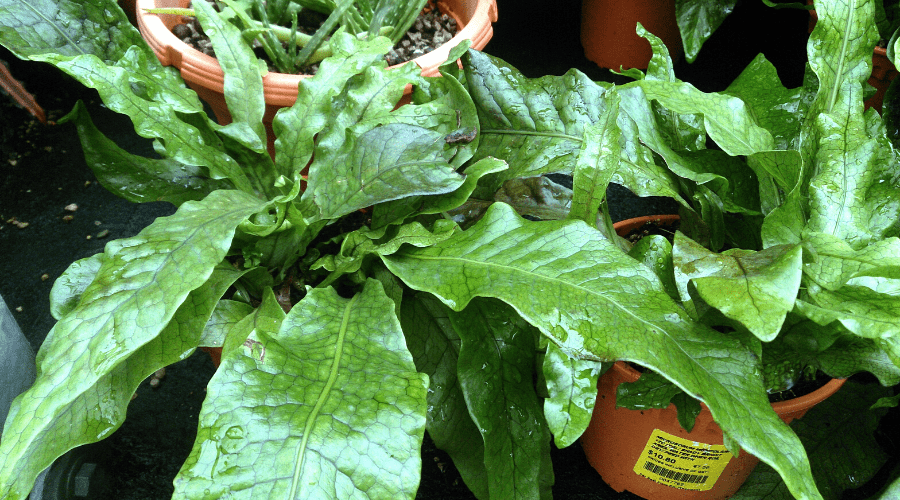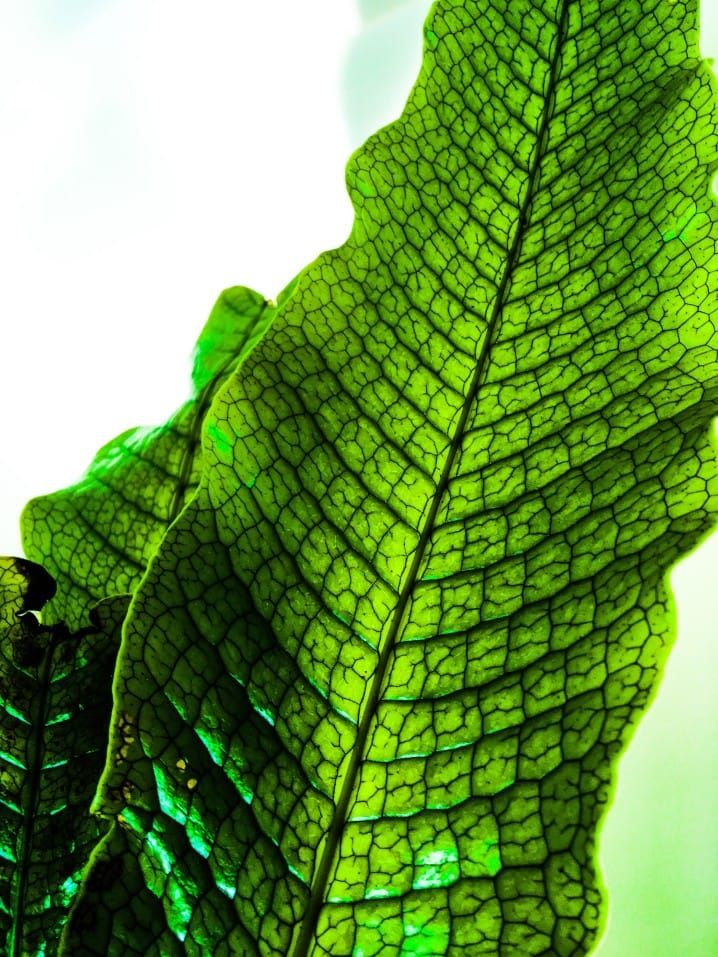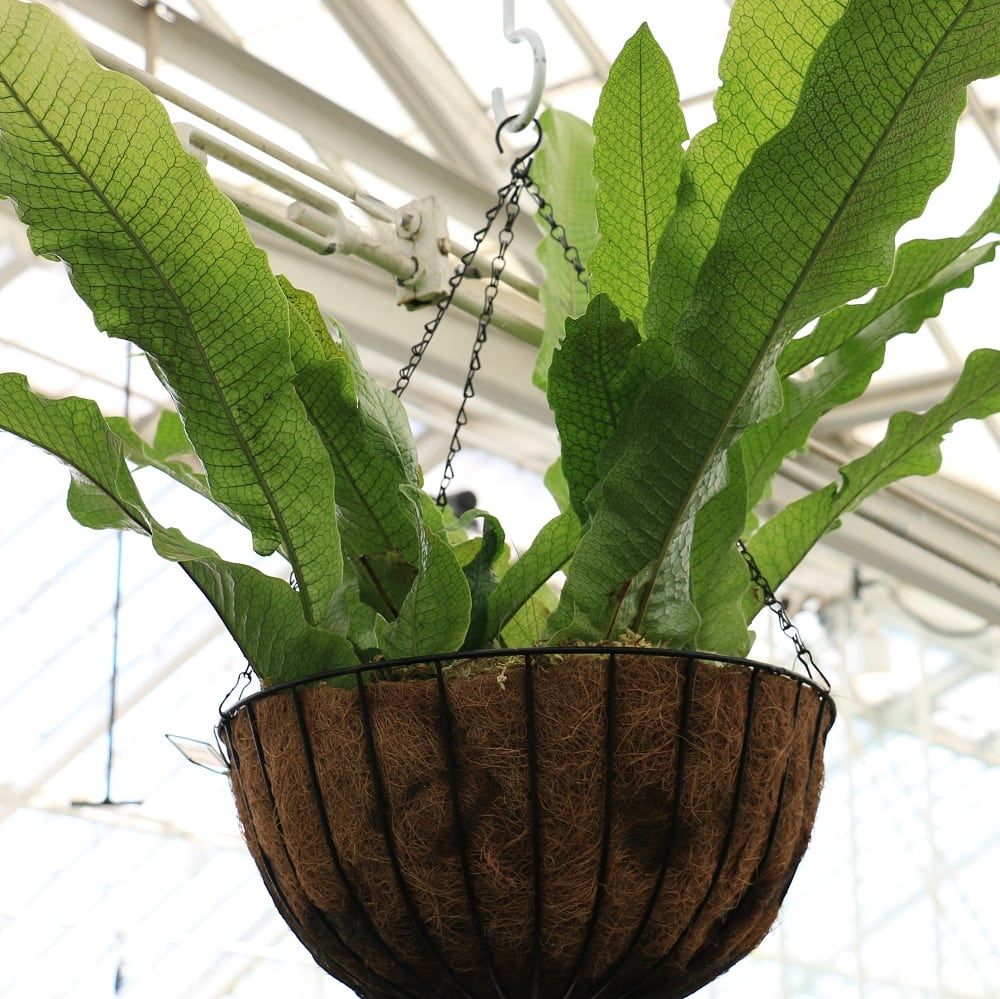There is a large array of tropical houseplants you can choose from to help brighten up those dark corners and add texture and color throughout your living area. Unfortunately, most people only pick and choose from a few offered species and leave out unique options.
The Crocodile Fern is one such plant, and unlike its name suggests, it does not have thick, leathery leaves, but rather a delicate, scale-like texture marked by dark green veining. It is an excellent choice for your houseplant collection due to its size and texture, and this Crocodile Fern plant guide is exactly what you need to learn all about this wicked cool plant.
Crocodile Fern Details
Microsorum musifolium
AKA Alligator Fern, Crocodylus fern, crocodile plant
Ease of Care: Easy
Light: Bright indirect to low light
Water: Regular water with good drainage, high humidity, or spray with water periodically
Height: 2 to 5 Feet
Growth Rate: Can reach full potential in one growing season
Pests: Fern scale
Diseases: Fungal diseases
Toxicity: Safe for humans and pets
The Crocodile Fern, Explained
The Crocodile Fern is native to Australia, but they are also commonly found in Indonesia, Myanmar, the Philippines, and other nearby countries. Their ideal habitat is humid and shady, allowing them to grow to a maximum height and 5 feet width. Despite the challenge this habitat may present, they are not difficult to grow indoors or in similar climate zones in other parts of the world.
The plant's name is derived from leaves' scaled appearance and not because the plant is thick or leathery.
Why Grow a Crocodile Fern?
If you aren't sure if this type of fern is for you, you might want to consider a few fun facts about this plant.
- They're great for low light areas of your home.
- Humidity is easy to add by placing the pot over a dish of water.
- The size of the plant can be controlled via trimming.
- The texture is wholly unique compared to other common houseplants.
- It is easy to care for.
- It is hardy and will generally grow back even if neglected.
- The Crocodile Fern can be grown outside in zones 10-12 and even in protected zone 9 areas.
Caring for Your Crocodile Fern
This fern's care isn't difficult, but you need to follow a few basic details to ensure healthy growth. To start, you must make sure your plant isn't exposed to temperatures lower than 55 degrees Fahrenheit, especially if you have an outdoor planting. If this cannot be avoided, protect your plant; as long as the base and rhizomes of the fern stay above this temperature, it will survive.
Cooler weather may slow its growth rate but won't hurt it. It thrives best between 65 and 75 degrees, although it can tolerate much higher heat. Just make sure it doesn't dry out in hot climates, even if it is humid.
It is epiphytic, and although you can plant it, it has shallow root growth and takes the majority of its nutrients and water in through the leaves.
Credit: Conservatory of Flowers
Watering
One thing the Crocodile fern likes is water, but it doesn't like to sit it in. As an epiphytic, it takes in moisture through the leaves as well as the rhizomes system. Be sure to have it planted in a pot (or soils) that are well-draining, and simply water when the top few inches of the soil begin to dry out. Allow it to saturate well and drain from below.
If you live in a dry climate, place your pots over a dish of water filled with pebbles, so the moisture rises. You can also lightly mist the plant every few days. They do well in bathrooms due to the humidity created in these rooms.
Soils
One thing to keep in mind concerning a planting substrate is not just allowing it to be well-draining (a good violet planting soil often works) and considering the pH. The fern prefers a neutral to slightly acidic to slightly alkaline soil for optimal growing conditions. Generally, a pH between 6.0 and 8.5 is ok.
Plant Location
The fern grows naturally in the environment undergrowth and is sheltered by other plants. They do not like direct sunlight and do best with strong indirect light and shaded areas. These are great plants for the corners of your home or areas that do not get strong lighting. Northern or Eastern window areas are also decent choices. Just be sure they are not drafty or cold come the winter months.
You also want to avoid heating and cooling vents or drafty areas as it will dry your plant out. If you start to see yellowing leaf edges or brown tips, this is an indication of dryness.
The Crocodile Fern Family
Part of the Microsorum genus, the Crocodile Fern is closely related to approximately 50 other fern species. These all have rhizomes rather than roots, a kind of creeping rootstalk that spreads horizontally under the plant. They store starches and proteins for the plant to survive through unfavorable seasons (or periods of neglect). Other popular ferns for your home and garden from this genus include the Java Fern, Monarch Fern, and Kangaroo Fern.
Credit: Dave's Garden
Propagating a Crocodile Fern
Although they reproduce naturally through spores, you can also propagate the plant via the rhizome structure. To do this:
- Lift your plant from the pot when you see new growth emerging and gently detangle the roots or cut those that have grown together.
- Place these 'cuttings' into moist, rich, loamy potting soils.
- Keep the soil moist while new growth begins and establishes itself.
Purchasing Crocodile Ferns
The Crocodile Fern is not as well known as other popular houseplant options, and it isn't often kept in stock because of this. You can always check local garden centers, even at big box stores, for rare availability, but your best bet is to look online at nursery and private supplies. Always check for how they are shipped as well. Bare roots should be protected for moisture control, not wrapped dry.
If online purchase is your only option, there are a great many sellers on Etsy and eBay who have crocodile ferns in various sizes. However, given the nature of these sites, it is difficult to ensure plants will consistently arrive in healthy condition. That said, American Plant Exchange is a company we often recommend for live plants online, and their Etsy store stocks Crocodile Ferns.
Crocodile Fern, 6-Inch Pot
This fern prefers bright, indirect light or low light. Wait until the first inch of soil is dry, then water your Crocodile Fern deeply. Your fern will need a humid environment to thrive, so misting the leaves with a spray bottle daily is encouraged.
Common Crocodile Fern Questions Answered
Despite being a fairly easy plant to grow, people have a few common questions about them. These are some of the more frequently asked questions concerning their health and care.
What diseases and bugs do Crocodile Ferns get?
Credit: BambooLand
Ferns are susceptible to a few things, although they are generally a pretty healthy plant overall. You need to watch out for is fern scale, noticeable due to the flaky, white scape located on foliage and stems. An insecticide oil can help eradicate them in no time.
Ferns can also be susceptible to fungal infections if too much water is kept near the leaves' base or rhizome system. Fungicide foliar sprays can help with this, but trimming out leaves to open up the airflow in the middle of the plant can help as well.
What is the best fertilizer?
Ferns are somewhat fragile and sensitive to fertilizers, especially when they pull nutrients from the environment. So it is important to avoid over-fertilizing your plant. It is best to apply a water-soluble fertilizer specifically for ferns through the growing season.
Are Crocodile Ferns dangerous?
Crocodile ferns are not poisonous or noxious in any manner to humans or pets. You don't want to eat them, but it isn't likely to bother you if ingestion occurs. The same goes for your pets; if they chew on them, they may throw it up, but not because they are poisoned.
Conclusion
If you love your houseplants or even want to add a cool looking fern to your shady garden area and live within zones 10-12, the Crocodile Fern is an awesome addition. This plant is not difficult to care for and only has a few minor details to the attention you need to consider, such as light and humidity.
Even if you can't find this beauty in a local garden center, don't give up your search and check out online sources. Once you have your own, you can also easily propagate it to grow new plants.
We'd love to see where you are enjoying your Crocodile Fern! And, as always, please share!



